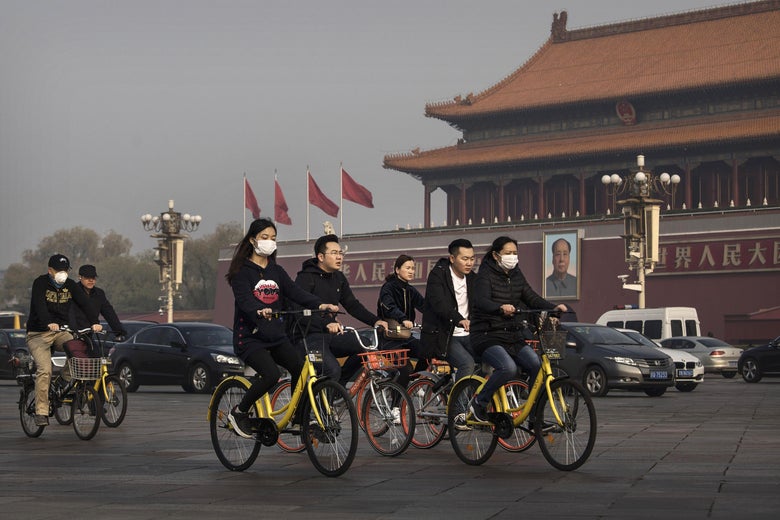
Chinese commuters ride bike share through Tiananmen Square on March 29, 2017 in Beijing, China.
Kevin Frayer/Getty Images
The Chinese government announced Tuesday that two people in Beijing have been diagnosed with pneumonic plague, a deadly pandemic once known as the Black Death that killed tens of millions of people across Europe in the Middle Ages. The two patients were first treated in Inner Mongolia, a sparsely populated area in northern China, but after persistent respiratory problems and high fever, two symptoms of the plague, they were taken to a hospital in Beijing’s Chaoyang District. A local news outlet said police quarantined the patients’ room on Monday night, but a now-deleted social media post by a doctor at the hospital indicated the pair first sought treatment as long as 10 days ago.
The timeline of the diagnosis is significant for multiple reasons in assessing the pandemic risk to the highly infectious illness, which can be transmitted by humans. First, although the pneumonic plague is universally fatal when left untreated, if diagnosed and treated with antibiotics within 24 hours of showing symptoms the recovery rate is high, according to the World Health Organization. That would make the timing of the initial hospital visit and when the patients showed symptoms particularly important, as well as who they may have come into contact with in the meantime.
“On Tuesday, Chinese censors instructed online news aggregators in China to ‘block and control’ online discussion related to news about the plague,” according to a directive seen and reported on by the New York Times. “Skeptical Chinese internet users have charged the government with being slow to disclose news about the disease, which is transmitted between humans and kills even faster than the more-common bubonic form. China has a history of covering up and being slow to announce infectious outbreaks, prompting many people to call for transparency this time.”